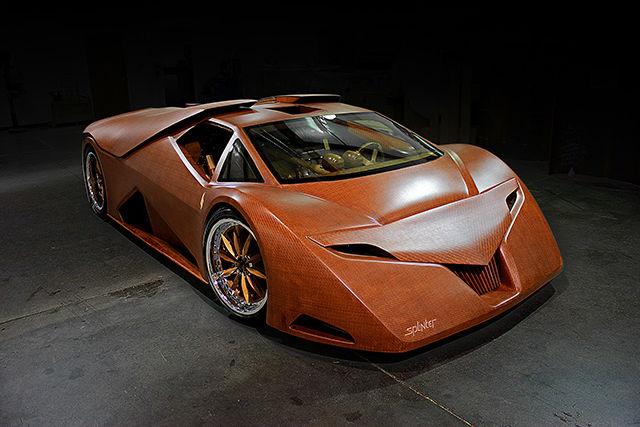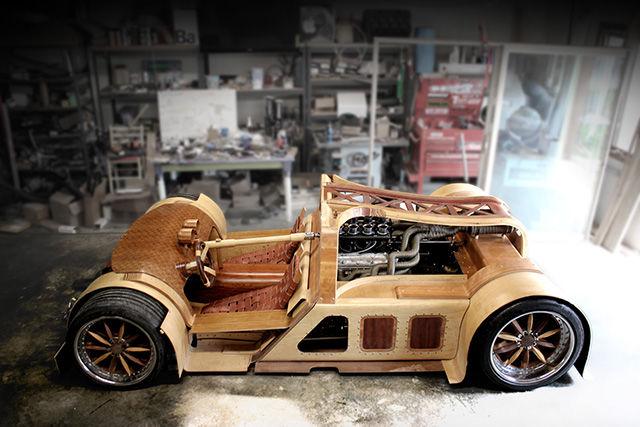The fascination surrounding cars, and their appealing design and power, is something shared by many people. In the case of Joe Harmon, a former graduate student studying industrial design, this love was taken to a new level. That level was the Splinter supercar project. The Splinter car is the first supercar made almost entirely out of wood that Harmon’s company, Harmon Design, recently completed.
During his time between undergraduate and graduate school, Harmon was looking for a project to put his education to the test.
“I’ve been into cars my whole life and I wanted to design and build my own car,” Harmon said.
Harmon goes on to explain how he got the inspiration for a wooden car from a World War 2 plane called the de Havilland Mosquito. According to Harmon, the Mosquito was one of the fastest planes of the war and was made almost entirely out of wood.
“Most people don’t think about wood in that way,” Harmon said.
The durability and flexibility of wood allow it to be used in high performance ways like a plane or supercar, according to Harmon.
Harmon goes on to explain the logistics of a project like his. One obstacle they faced early was the advanced curvature required for the sleek body they wanted on the supercar. The solution to this problem was one of the most technically innovate parts of the Splinter car project. Harmon and his team designed two looms to weave wood in a cloth-like manner that could be used to make a sleek body for the supercar.
The woven wood body was added to individually molded pieces of wood that made up the chassis of the car. The wheels, one of the first pieces completed of the car, are even made of wood, with only the tires, engine and other small components being made of other materials.
“We were trying to do stuff with wood that no one had really done before,” Harmon said.
The project came with a series of different problems but the main issue, according to Harmon, was staying organized throughout the immense project. Harmon said the car had so many subprojects and tasks that it was challenging to stay on task and organized during the seven years he worked on and off on the project.
“[NC State] gave me the flexibility in my graduate program to explore something like this,” Harmon said.
Additionally, Harmon cited his professors as one of the most valuable resources the university provided him. “They teach you to think,” Harmon said, referring to how valuable the design education he was given at NC state was.
Bong-Il Jin, an associate professor of graphic and industrial design who taught Harmon and assisted him with the Splinter project, shared a similar sentiment.
Jin said the most help he was able to provide to Harmon was his education throughout his time at NC State. The presence of crazy ideas is critically important to a design education, according to Jin.
“I taught him the importance of innovation … of innovative design,” Jin said.
Jin said many projects like the Splinter project have taken place at NC State, pointing at a shelf in his office with stacks and stacks of reports on similar projects. Jin said design is very important to a consumer’s lifestyle and critical design experiences like the Splinter project are beneficial to design.
The most valuable part of the Splinter car project was the learning experience it provided, according to Harmon. Harmon said he doesn’t plan to make another Splinter car but he does plan on continuing to work on and learn from the one he has already made. As for other projects, Harmon said there would always be something else to work on and other projects to take.
NC State alumnus Joe Harmon unveils the chassis to Splinter, the first wooden supercar.









